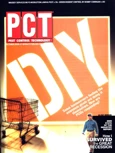You killed the adult blow flies in the account. You were able to track down the fly breeding site, let’s say it was a dead rat. You removed the rat and the fly maggots and cleaned up the site. But now your customer says there are more flies. What did you miss? Probably nothing. Your only mistake was not considering the pupation habits of the flies.
Fly larvae usually feed and develop in decaying or fermenting semiliquid foods. But when they are fully grown and ready to pupate, they need a drier, cooler, more protected location. So the larvae of many pest flies migrate or crawl away from their food source to pupate. During pupation, the larval skin turns into a protective cover called a puparium. Inside, the larva turns into an adult fly. This process generally takes several days, depending on the species and environmental conditions. This means finding and removing the breeding site is not always enough. New flies can emerge in the account unless you also can track down all of the migrating larvae.
When filth flies (house, blow, bottle, flesh, soldier) are ready to pupate, they tend to crawl for some distance along walls, often pupating when they reach a corner. House fly larvae can travel several hundred feet before pupating. Outdoors, filth flies pupate in the top couple inches of soil, near the food source. You can use this habit to your advantage by disturbing the soil in their pupation sites. Raking or turning over the soil exposes the pupae and causes them to dry out and makes them available to predators, such as birds.
You might be able to find filth fly larvae or pupae in an account, but smaller fly larvae migrate as well. Drosophila and phorid fly larvae also leave their feeding site to pupate. Drosophila (fruit fly) larvae will feed in their fermenting food source for five to six days before crawling either to a drier part of the food or out of the food before pupating. Phorid fly larvae do the same.
While finding and removing the breeding sources will solve the fly problem, consider that you may have to deal with some newly emerged adult flies before you can pronounce the case closed.
This article was adapted from Techletter, a biweekly publication from Pinto & Associates, Mechanicsville, Md. To subscribe, visit www.techletter.com, or call 301/884-3020.
*****
Blow Fly Breeding Source:
Dead Rodents
Some tips on reducing dead rodent odors.
In structural infestations, it is unpredictable as to where rodents poisoned by baits will succumb and die. Most rodents expire in their nests, where the majority of their time is spent. With mice, because of their small body size and low body mass, the odors of dead mice usually go undetected. In part, this may explain the origin and persistence of the myth that rodents poisoned with anticoagulants leave the building to die (after all, the client never smelled anything). Early merchandisers of warfarin, in efforts to offset the disadvantages of using baits instead of traps, also made exaggerated claims as to the ability of their poisons to drive poisoned rats from the building seeking water. There is no published information to substantiate such claims.
One dead 8- to 16-ounce rat can produce significant carcass odors. Thus, a nest of dead rats in a wall or ceiling can be overwhelming and repulsive, especially if the carcasses were located near a human activity area or where air currents carry such odors. Dead carcass odors are the most intense for the first several days and then gradually dissipate. But some carcasses may continue to smell for upwards of a week.
Various new biological products are available that combine bacterial and enzymatic agents designed to consume and eliminate various odors of organic matter at their source such as decaying rodent odors, urine, feces, vomit, skunk odor and other odors. These products are most effective if the source can be located and directly treated but many times this is not possible.
RODENTICIDE SAFETY ISSUES. When rodenticides are used according to label directions and the safety precautions are adhered to, rodenticides present little hazard to non-target animals or to the environment. Still, it is important for all applicators (both lay and professional) to keep in mind rodenticides have the potential to seriously harm people, dogs, cats, birds, livestock, various wildlife and extremely expensive zoological animals.
Every effort should be made to analyze situations where children, companion animals or wildlife may be at risk.
Some rodenticides are more toxic to dogs, cats, birds and livestock than others and the professional should be aware of the differences. Cholecalciferol, for example, is particularly active against dogs and cats.
The following provides safety tips regarding the storage and use of rodenticides:
- Check the current label before using rodenticides to ensure the product is labeled for the intended use. Even though two anticoagulant block baits may seemingly be the same type of bait and contain similar AIs at similar concentrations, one product may be labeled for outdoor use and the other may not.
- Store baits in a locked cabinet and post appropriate warnings on the outside of the cabinet doors.
- Collect, remove and properly dispose of all unconsumed bait at the end of the poisoning program. Baits should not be tossed into inaccessible areas within structures and abandoned (i.e., no intent of recovering the rodenticide baits).
- Minimize bait translocation by using bait blocks secured on rods within secured bait stations or within stations via their designs that will contain the block baits.
- Always keep baits out of the reach of people, livestock, dogs, cats and wildlife.
- Have any dogs or cats or other animals (horses, livestock, zoo animals, etc.) that have access to the affected area of a facility confined during baiting operations.
- Handle rodent carcasses with rubber gloves, long tongs or newspaper and bury or incinerate all dead rodents.
This article was adapted from Rodent Control: A Practical Guide for Pest Management Professionals by Bobby Corrigan. To order, visit www.pctonline.com.

Explore the October 2009 Issue
Check out more from this issue and find your next story to read.
Latest from Pest Control Technology
- Understanding Rodents and Bird Flu
- Green Pest Solutions Awards Safest Driver New 2025 Ford F150
- UF/IFAS Sheds Light on Tiny Invaders During Termite Awareness Week
- Registration Open for Lawn & Landscape Technology Conference
- Fleetio Launches Automotive Service Excellence Scholarship
- WorkWave Appoints John Phelan as CTO
- PMPs Use Capitol Hill Visits to Push for Preemption
- 20 Trapping Tips





